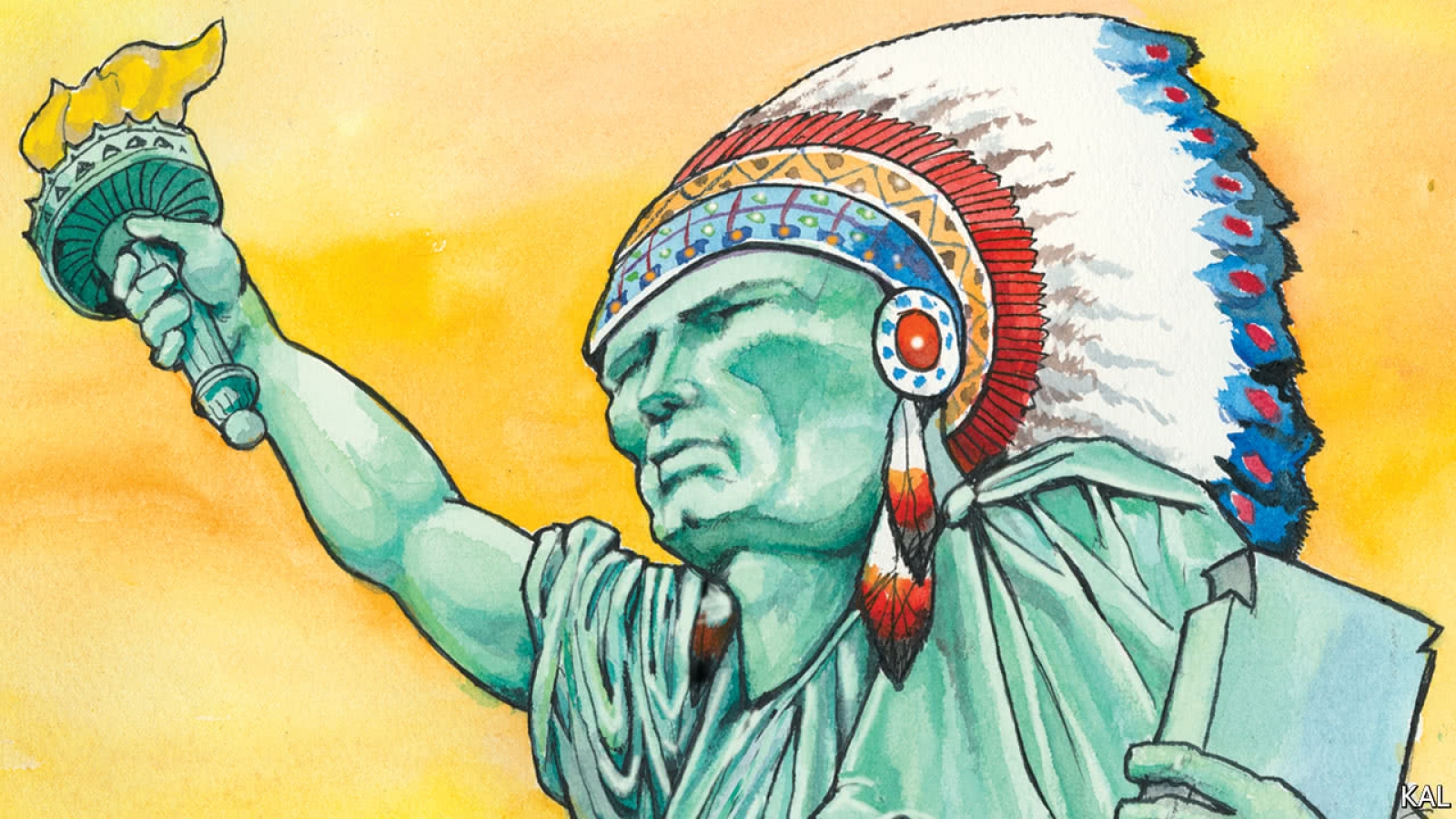Looking at Indians, white Americans see themselvesPosted in Articles, History, Law, Media Archive, Native Americans/First Nation, Politics/Public Policy, United States on 2018-02-11 03:45Z by Steven |
Looking at Indians, white Americans see themselves
The Economist
2018-02-10
Thinking about natives in an era of nativism
IN EARLY 1924 the blue-bloods of Virginia found themselves with a problem. To criminalise interracial marriage, the state had drafted a law that classified anyone possessing even “one drop” of non-white blood as “coloured”. Awkwardly, that would include many of the so-called First Families of Virginia, because they traced their descent to a native American woman, Pocahontas, who had been abducted and married by a member of the Jamestown colony three centuries before. This ancestry had been considered far from shameful. It was a mark of American aristocracy, the real-life Pocahontas having been reinvented (she probably did not save the life of a colonist called John Smith) as an “American princess”. To fix matters, a clause known as the “Pocahontas exception” was added to the racist law, to exempt anyone with no more than one-sixteenth Indian blood.
This episode, documented in a new exhibition at the National Museum of the American Indian in Washington, DC, on Indian myths and reality, helps explain a cultural puzzle. It has become clear that the pre-Columbian Americas were much more densely populated, by more sophisticated civilisations, than was previously thought. By one estimate North America, the more sparsely populated continent, had 18m people when Columbus sailed, more than England and France combined. Yet in the popular imagination it remains a vast wilderness, peopled by a few buffalo-hunters. The reason for this gigantic misunderstanding, suggest the Smithsonian’s curators, goes beyond bad schooling…
Read the entire article here.









